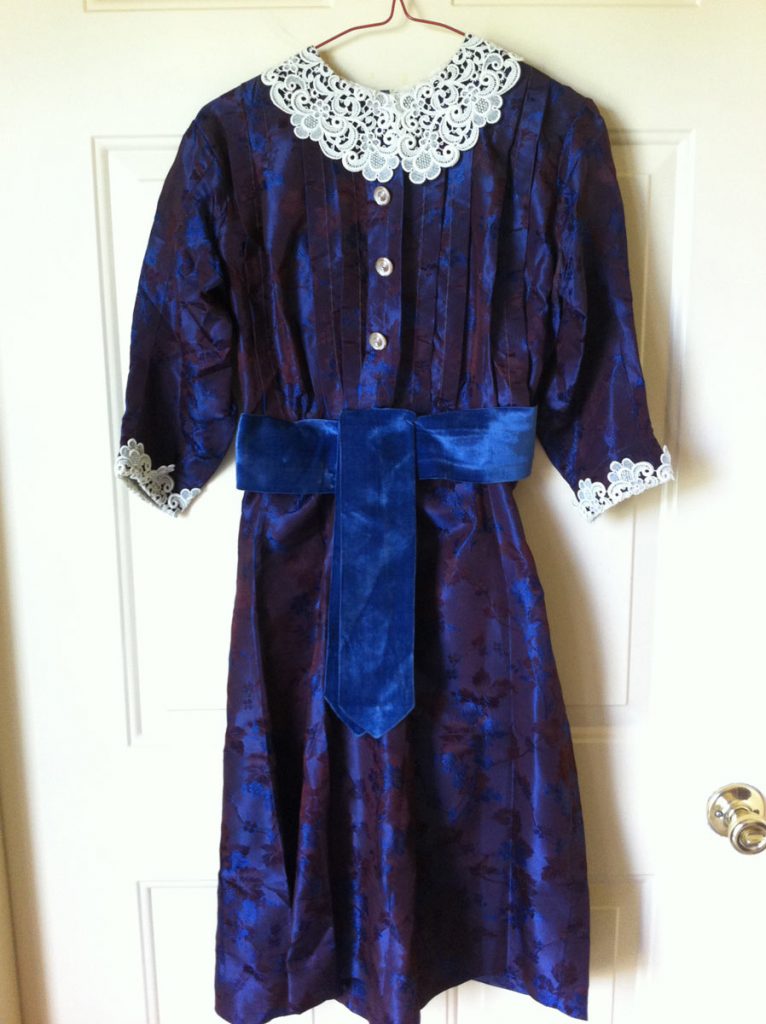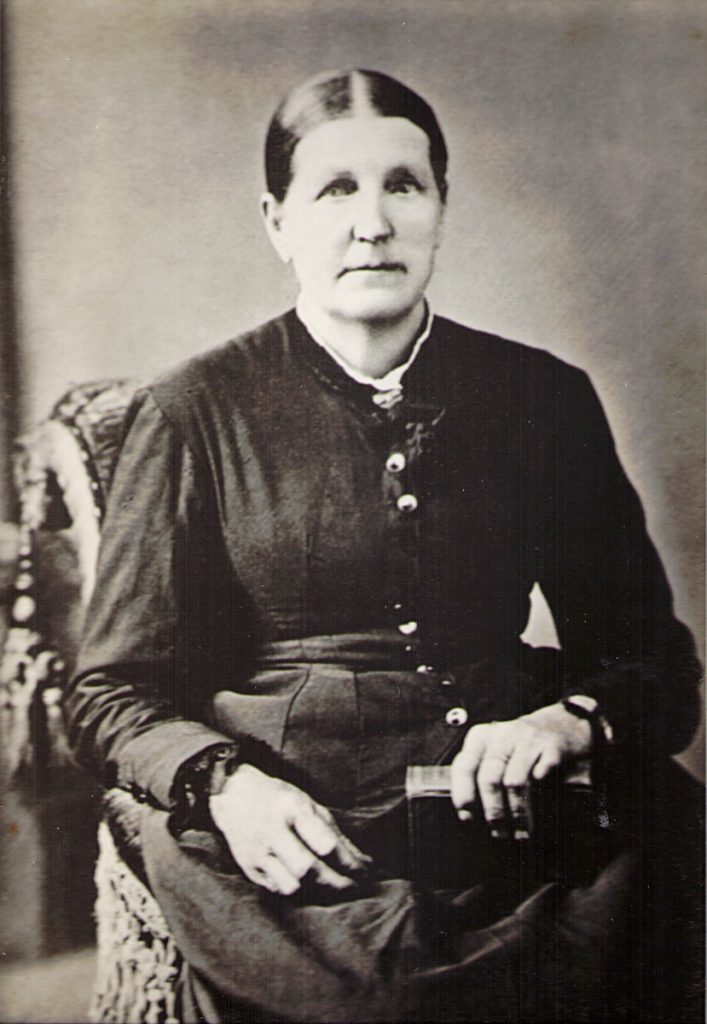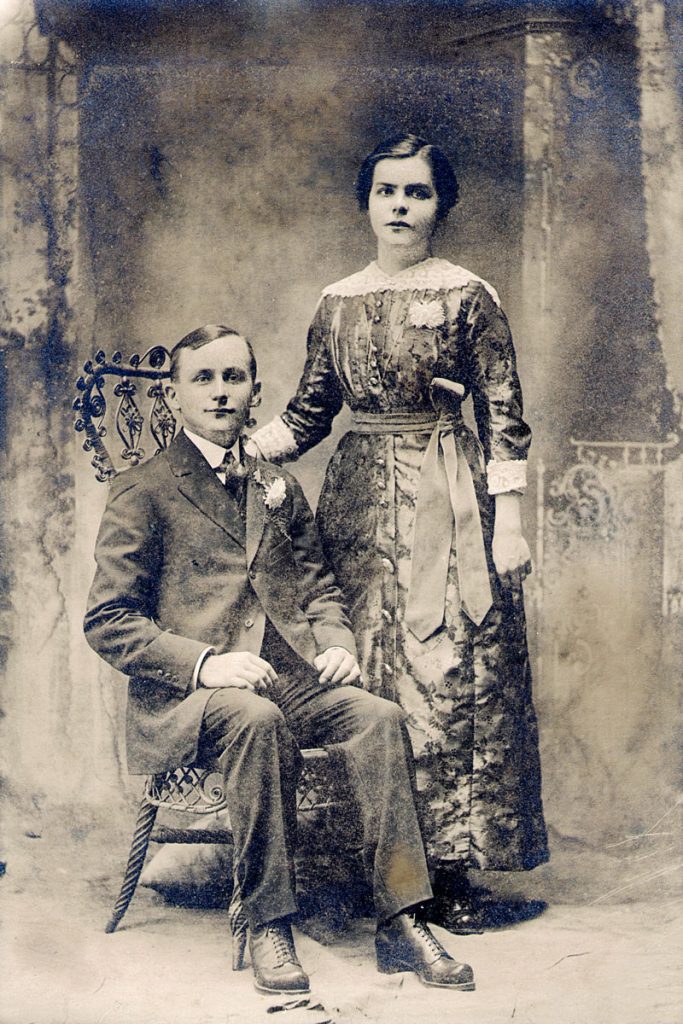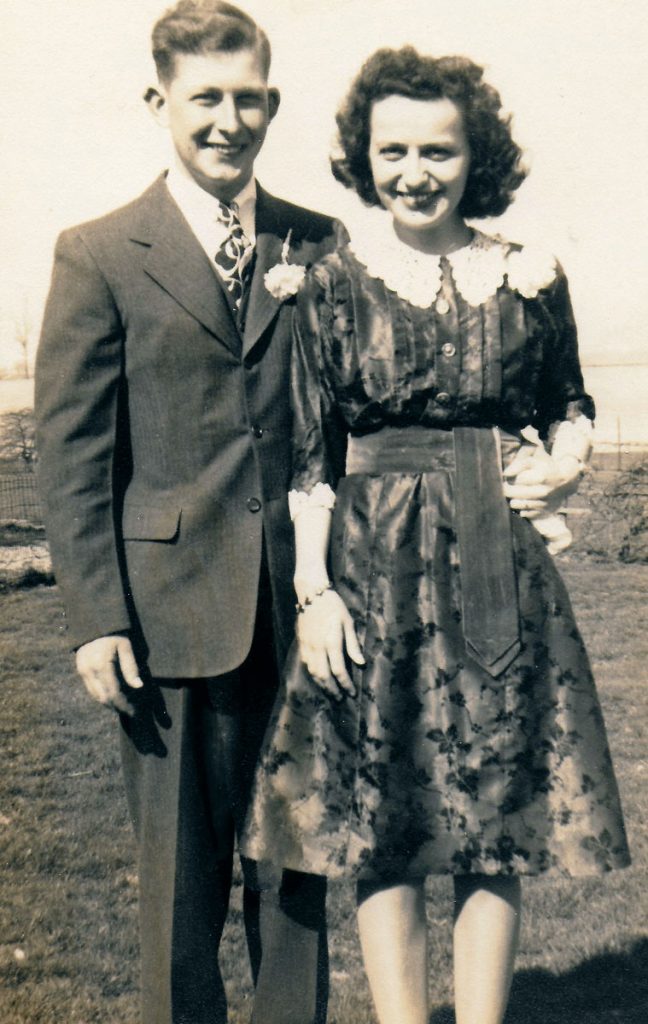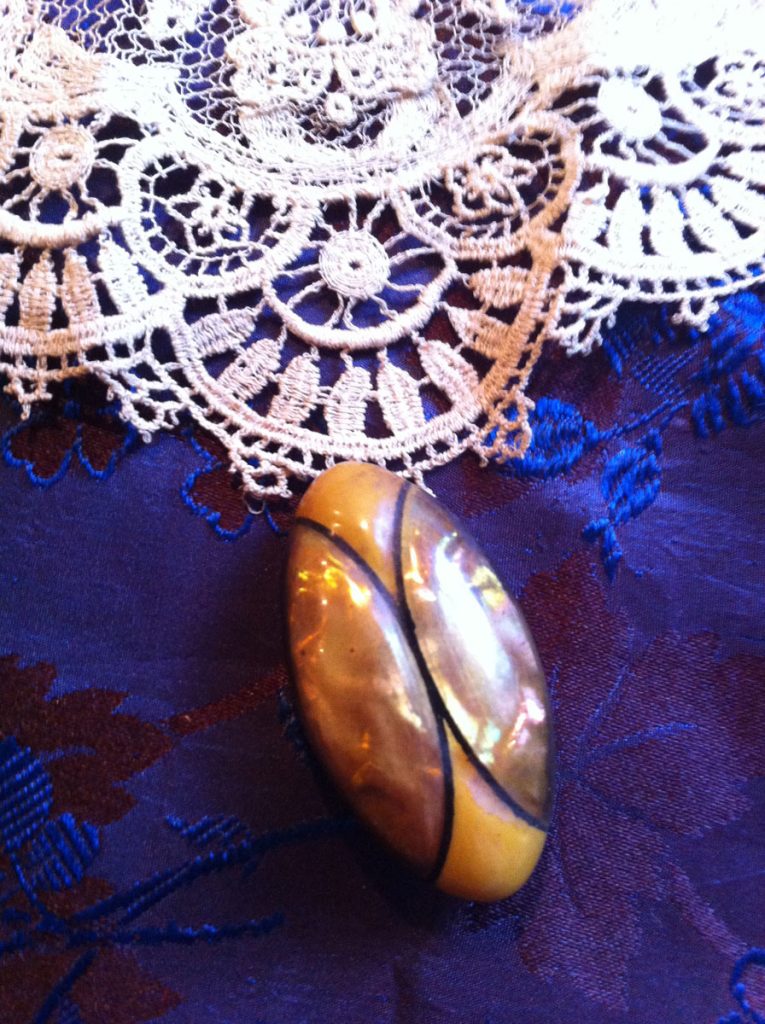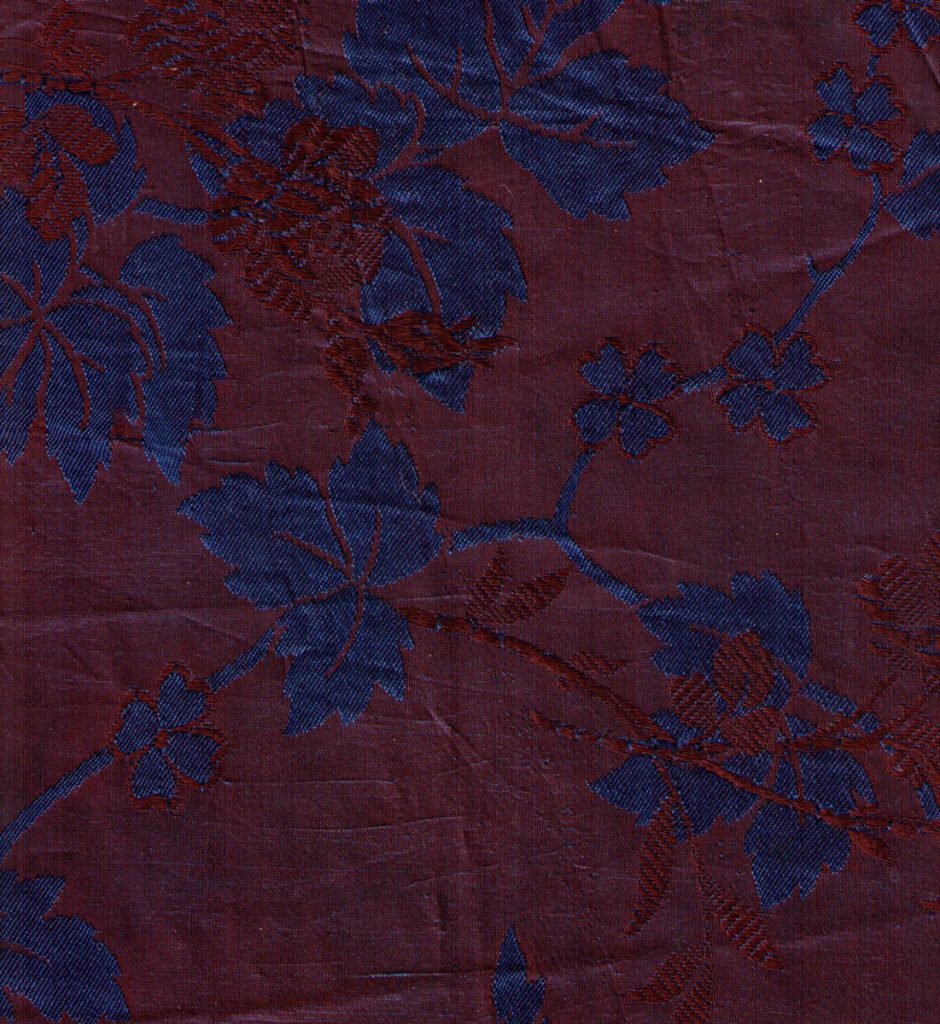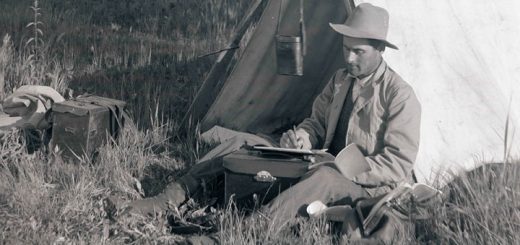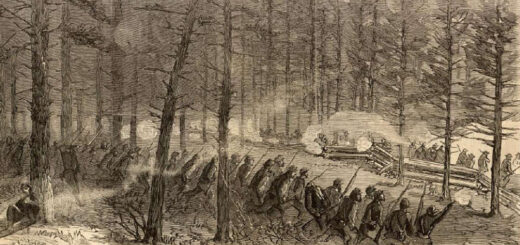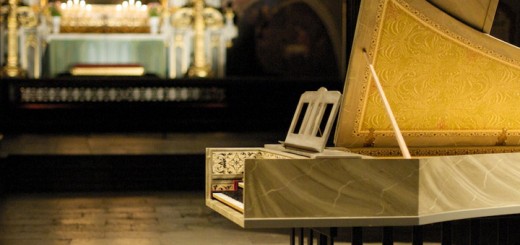Four Weddings, One Dress
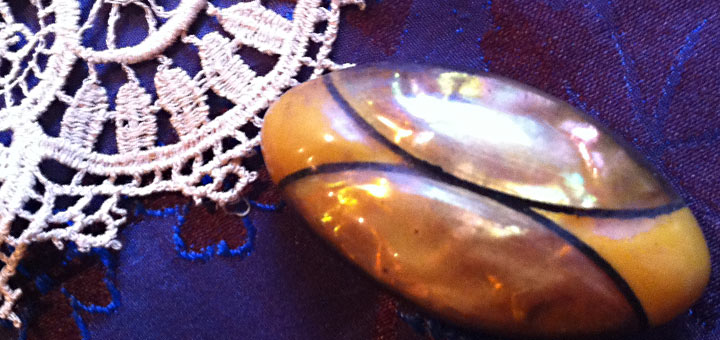
Several articles have been written about the importance of passing on things to future generations: photos and letters, names and stories, or toys and clocks. Nevertheless, although a wedding dress may be passed on from mother to daughter, it is certainly rare that a wedding dress is passed on through four generations of direct line brides.
Such is the case with the wedding dress that was first worn by Hannah McWilliams (b. 1827) who married William Henry Davis in the year 1851. It was passed to Hannah’s daughter, Mary Davis (b. 1852), who married Samuel Sechler in 1880; then to Mary’s daughter, Hannah Sechler (b. 1889), who married Clarence Hagenbuch in 1914; and finally to Hannah’s daughter, Florence Hagenbuch (b. 1925), who married John Robb in 1946. (Florence’s Hagenbuch line is as follows: Florence b. 1925 < Clarence Hagenbuch b. 1889 < Hiram b. 1847 < William b. 1807 < Henry b. 1772 < Michael b. 1746 < Andreas b. 1711)
The story of the wedding dress is told best in a 1996 piece that appeared in a Pennsylvania newspaper, the Danville News.
Something old brings wedding joy to 4 generations
by Holly Brandon, 1996
Rice is no longer tossed. Birdseed is. Brides are escorted down the aisle, not “given away”. Those brides still promise to love and honor. But not to obey. Professional portraits remain popular, although camcorders increasingly capture the actual “I do’s” of the day.
Wedding day decorum may change with the times, but many connubial customs carry on. June reigns as the most popular month for weddings. White gowns still rule. All brides are beautiful. Four generations of beautiful brides in a Danville RD family have shared another wedding tradition, one started in 1851. Florence Robb, her mother, grandmother and great-grandmother were married in the same gown.
Of brocaded silk in deep brown and blue floral print, the gown itself defies traditional bridal attire. Passed from mother to daughter, the gown evolved as it endured, as each bride made it her own. The original style of the gown is unknown, said Robb. No photograph exists of the very first bride to wear it, Robb’s great grandmother Hannah McWilliams Davis. Family records indicate only the purchase of 20 yards of the reversible silk material.
Robb’s grandmother, Mary C. Davis Sechler, next wore the gown nearly 30 years later on Dec. 1, 1880. Her wedding day photo shows the gown with a high lace, handkerchief collar held by a decorative pin, fitted waist and deep ruffles at the wrist and hemline.
When Robb’s mother, Hannah Sechler Hagenbuch, wore the gown on her Nov. 25, 1914 wedding day, the gown’s skirt and sleeve length had been shortened, the ruffles removed. A lace shawl collar replaced the handkerchief one and lace cuffs edged the sleeves. A blue velvet sash cinched the waist in a decorative knot.
By the time of her wedding on April 14, 1946, Robb said the then 100-year-old gown was in delicate condition. “But my mother wanted me to wear it. I think she wanted to keep up the tradition, ” said Robb. “Of course I consented.”
It was, too, “after the second World War. You couldn’t get anything,” Robb said of supply shortages. We had to use the old velvet (sash). You can see the crease there,” she said pointing to her bridal portrait. For her wedding, the full-length gown was altered to a street-length dress. Sleeves were also shortened and given new cuffs. The shawl collar was replaced by a scalloped one.
Because of its fragility, “I only had the gown on for a few minutes,” said Robb, “just through the ceremony and wedding photo.” The 143-year-old tradition ended with Robb. When it came time for her own daughters to marry, “I didn’t even offer (the gown). It’s not in condition for anyone else to wear.” Robb said she may one day donate the gown to a local museum. For now a cedar chest safely stores the family heirloom, and it’s memories of new beginnings linked by legacy and love.
Fortunately, for our family history, the gown was not donated to a museum; but is stored away safely by Florence “Hagenbuch” Robb’s daughter, Kathleen “Robb” Shuler. This is one more example of the importance the Hagenbuch family places on passing important items on to future generations.

